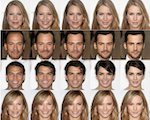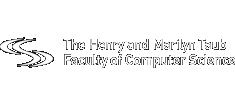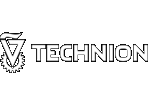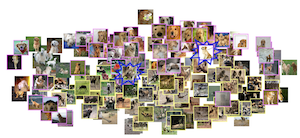Relevant publications
Dr. Eli Schwartz
ISP distillation

Nowadays, many of the images captured are ‘observed’ by machines only and not by humans, e.g., in autonomous systems. High-level machine vision models, such as object recognition or semantic segmentation, assume images are transformed into some canonical image space by the camera Image Signal Processor (ISP). However, the camera ISP is optimized for producing visually pleasing images for human observers and not for machines. Therefore, one may spare the ISP compute time and apply vision models directly to RAW images. Yet, it has been shown that training such models directly on RAW images results in a performance drop. To mitigate this drop, we use a RAW and RGB image pairs dataset, which can be easily acquired with no human labeling. We then train a model that is applied directly to the RAW data by using knowledge distillation such that the model predictions for RAW images will be aligned with the predictions of an off-the-shelf pre-trained model for processed RGB images. Our experiments show that our performance on RAW images for object classification and semantic segmentation is significantly better than models trained on labeled RAW images. It also reasonably matches the predictions of a pre-trained model on processed RGB images, while saving the ISP compute overhead.
Detector-free weakly supervised grounding by separation

Nowadays, there is an abundance of data involving images and surrounding free-form text weakly corresponding to those images. Weakly Supervised phrase-Grounding (WSG) deals with the task of using this data to learn to localize (or to ground) arbitrary text phrases in images without any additional annotations. However, most recent SotA methods for WSG assume the existence of a pre-trained object detector, relying on it to produce the ROIs for localization. In this work, we focus on the task of Detector-Free WSG (DF-WSG) to solve WSG without relying on a pre-trained detector. We directly learn everything from the images and associated free-form text pairs, thus potentially gaining an advantage on the categories unsupported by the detector. The key idea behind our proposed Grounding by Separation (GbS) method is synthesizing `text to image-regions’ associations by random alpha-blending of arbitrary image pairs and using the corresponding texts of the pair as conditions to recover the alpha map from the blended image via a segmentation network. At test time, this allows using the query phrase as a condition for a non-blended query image, thus interpreting the test image as a composition of a region corresponding to the phrase and the complement region. Using this approach we demonstrate a significant accuracy improvement, of up to 8.5% over previous DF-WSG SotA, for a range of benchmarks including Flickr30K, Visual Genome, and ReferIt, as well as a significant complementary improvement (above 7%) over the detector-based approaches for WSG.
MetAdapt: Meta-learned task-adaptive architecture for few-shot classification

Few-Shot Learning (FSL) is a topic of rapidly growing interest. Typically, in FSL a model is trained on a dataset consisting of many small tasks (meta-tasks) and learns to adapt to novel tasks that it will encounter during test time. This is also referred to as meta-learning. Another topic closely related to meta-learning with a lot of interest in the community is Neural Architecture Search (NAS), automatically finding optimal architecture instead of engineering it manually. In this work we combine these two aspects of meta-learning. So far, meta-learning FSL methods have focused on optimizing parameters of pre-defined network architectures, in order to make them easily adaptable to novel tasks. Moreover, it was observed that, in general, larger architectures perform better than smaller ones up to a certain saturation point (where they start to degrade due to over-fitting). However, little attention has been given to explicitly optimizing the architectures for FSL, nor to an adaptation of the architecture at test time to particular novel tasks. In this work, we propose to employ tools inspired by the Differentiable Neural Architecture Search (D-NAS) literature in order to optimize the architecture for FSL without over-fitting. Additionally, to make the architecture task adaptive, we propose the concept of ‘MetAdapt Controller’ modules. These modules are added to the model and are meta-trained to predict the optimal network connections for a given novel task. Using the proposed approach we observe state-of-the-art resu
StarNet: towards weakly supervised few-shot detection and explainable few-shot classification

In this paper, we propose a new few-shot learning method called StarNet, which is an end-to-end trainable non-parametric star-model few-shot classifier. While being meta-trained using only image-level class labels, StarNet learns not only to predict the class labels for each query image of a few-shot task, but also to localize (via a heatmap) what it believes to be the key image regions supporting its prediction, thus effectively detecting the instances of the novel categories. The localization is enabled by the StarNet’s ability to find large, arbitrarily shaped, semantically matching regions between all pairs of support and query images of a few-shot task. We evaluate StarNet on multiple few-shot classification benchmarks attaining significant state-of-the-art improvement on the CUB and ImageNetLOC-FS, and smaller improvements on other benchmarks. At the same time, in many cases, StarNet provides plausible explanations for its class label predictions, by highlighting the correctly paired novel category instances on the query and on its best matching support (for the predicted class). In addition, we test the proposed approach on the previously unexplored and challenging task of Weakly Supervised Few-Shot Object Detection (WS-FSOD), obtaining significant improvements over the baselines.
UNIQ: Uniform noise injection for non-uniform quantization of neural networks

We present a novel method for training a neural network amenable to inference in low-precision arithmetic with quantized weights and activations. The training is performed in full precision with random noise injection emulating quantization noise. In order to circumvent the need to simulate realistic quantization noise distributions, the weight distributions are uniformized by a non-linear transfor- mation, and uniform noise is injected. This procedure emulates a non-uniform k-quantile quantizer at inference time, which adapts to the specific distribution of the quantized parameters. As a by-product of injecting noise to weights, we find that activations can also be quantized to as low as 8-bit with only a minor accuracy degradation. The method achieves state-of-the-art results for training low-precision networks on ImageNet. In particular, we observe no degradation in accuracy for MobileNet and ResNet-18/34/50 on ImageNet with as low as 4-bit quantization of weights. Our solution achieves the state-of-the-art results in accuracy, in the low computational budget regime, compared to similar models.
MetAdapt: Meta-learned task-adaptive architecture for few-shot classification

Few-Shot Learning (FSL) is a topic of rapidly growing interest. Typically, in FSL a model is trained on a dataset consisting of many small tasks (meta-tasks) and learns to adapt to novel tasks that it will encounter during test time. This is also referred to as meta-learning. So far, meta-learning FSL methods have focused on optimizing parameters of pre-defined network architectures, in order to make them easily adaptable to novel tasks. Moreover, it was observed that, in general, larger architectures perform better than smaller ones up to a certain saturation point (and even degrade due to over-fitting). However, little attention has been given to explicitly optimizing the architectures for FSL, nor to an adaptation of the architecture at test time to particular novel tasks. In this work, we propose to employ tools borrowed from the Differentiable Neural Architecture Search (D-NAS) literature in order to optimize the architecture for FSL without over-fitting. Additionally, to make the architecture task adaptive, we propose the concept of `MetAdapt Controller’ modules. These modules are added to the model and are meta-trained to predict the optimal network connections for a given novel task. Using the proposed approach we observe state-of-the-art results on two popular few-shot benchmarks: miniImageNet and FC100.
RepMet: Representative-based metric learning for classification and one-shot object detection

Distance metric learning (DML) has been successfully applied to object classification, both in the standard regime of rich training data and in the few-shot scenario, where each category is represented by only few examples. In this work, we propose a new method for DML, featuring a joint learning of the embedding space and of the data distribution of the training categories, in a single training process. Our method improves upon leading algorithms for DML-based object classification. Furthermore, it opens the door for a new task in computer vision — a few-shot object detection, since the proposed DML architecture can be naturally embedded as the classification head of any standard object detector. In numerous experiments, we achieve state-of-the-art classification results on a variety of fine-grained datasets, and offer the community a benchmark on the few-shot detection task, performed on the Imagenet-LOC dataset.
Baby steps towards few-shot learning with multiple semantics

Learning from one or few visual examples is one of the key capabilities of humans since early infancy, but is still a significant challenge for modern AI systems. While considerable progress has been achieved in few-shot learning from a few image examples, much less attention has been given to the verbal descriptions that are usually provided to infants when they are presented with a new object. In this paper, we focus on the role of additional semantics that can significantly facilitate few-shot visual learning. Building upon recent advances in few-shot learning with additional semantic information, we demonstrate that further improvements are possible using richer semantics and multiple semantic sources. Using these ideas, we offer the community a new result on the one-shot test of the popular miniImageNet benchmark, comparing favorably to the previous state-of-the-art results for both visual only and visual plus semantics-based approaches. We also performed an ablation study investigating the components and design choices of our approach.
Beholder-GAN: Generation and beautification of facial images with conditioning on their beauty level

Beauty is in the eye of the beholder. This maxim, emphasizing the subjectivity of the perception of beauty, has enjoyed a wide consensus since ancient times. In the digital era, data-driven methods have been shown to be able to predict human-assigned beauty scores for facial images. In this work, we augment this ability and train a generative model that generates faces conditioned on a requested beauty score. In addition, we show how this trained generator can be used to beautify an input face image. By doing so, we achieve an unsupervised beautification model, in the sense that it relies on no ground truth target images.
∆-encoder: an effective sample synthesis method for few-shot object recognition
Learning to classify new categories based on just one or a few examples is a long-standing challenge in modern computer vision. In this work, we propose a simple yet effective method for few-shot (and one-shot) object recognition. Our approach is based on a modified auto-encoder, denoted ∆-encoder, that learns to synthesize new samples for an unseen category just by seeing few examples from it. The synthesized samples are then used to train a classifier. The proposed approach learns to both extract transferable intra-class deformations, or “deltas”, between same-class pairs of training examples, and to apply those deltas to the few provided examples of a novel class (unseen during training) in order to efficiently synthesize samples from that new class. The proposed method improves over the state-of-the-art in one-shot object-recognition and compares favorably in the few-shot case.
NICE: noise injection and clamping estimation for neural network quantization
Convolutional Neural Networks (CNN) are very popular in many fields including computer vision, speech recognition, natural language processing, to name a few. Though deep learning leads to groundbreaking performance in these domains, the networks used are very demanding computationally and are far from real-time even on a GPU, which is not power efficient and therefore does not suit low power systems such as mobile devices. To overcome this challenge, some solutions have been proposed for quantizing the weights and activations of these networks, which accelerate the runtime significantly. Yet, this acceleration comes at the cost of a larger error. The uniqname method proposed in this work trains quantized neural networks by noise injection and a learned clamping, which improve the accuracy. This leads to state-of-the-art results on various regression and classification tasks, e.g., ImageNet classification with architectures such as ResNet-18/34/50 with low as 3-bit weights and activations. We implement the proposed solution on an FPGA to demonstrate its applicability for low power real-time applications.
DeepISP: Towards learning an end-to-end image processing pipeline
We present DeepISP, a full end-to-end deep neural model of the camera image signal processing (ISP) pipeline. Our model learns a mapping from the raw low-light mosaiced image to the final visually compelling image and encompasses low-level tasks such as demosaicing and denoising as well as higher-level tasks such as color correction and image adjustment. The training and evaluation of the pipeline were performed on a dedicated dataset containing pairs of low-light and well-lit images captured by a Samsung S7 smartphone camera in both raw and processed JPEG formats. The proposed solution achieves state-of-the-art performance in the objective evaluation of PSNR on the subtask of joint denoising and demosaicing. For the full end-to-end pipeline, it achieves better visual quality compared to the manufacturer ISP, in both a subjective human assessment and when rated by a deep model trained for assessing image quality.






